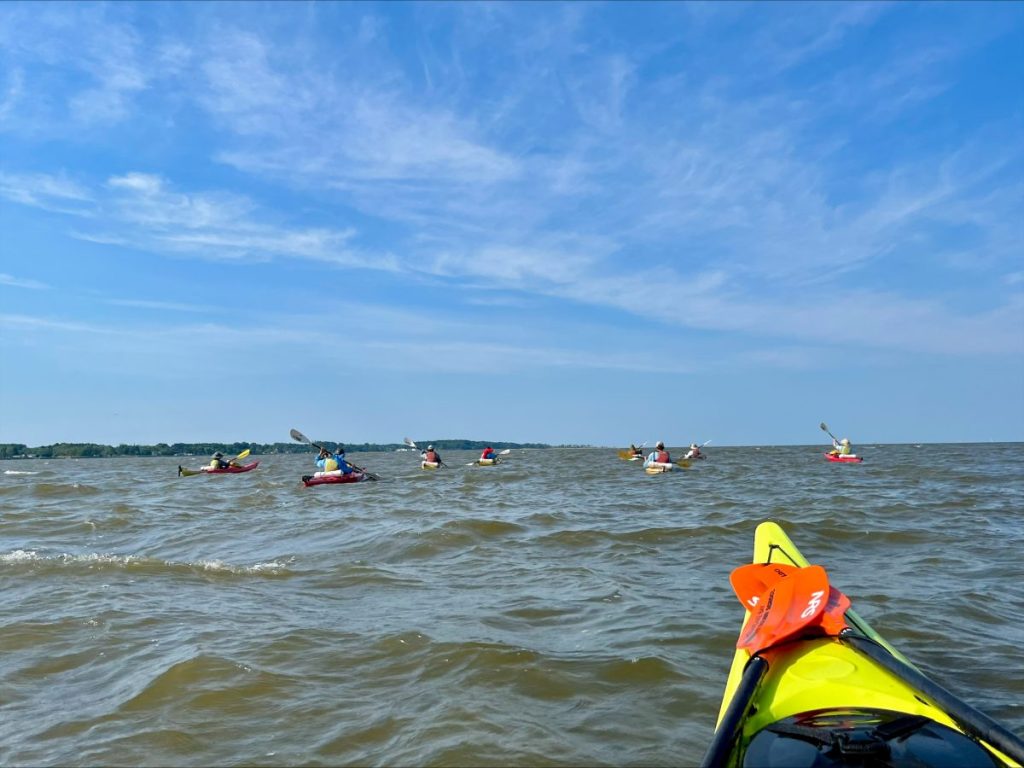HIGHLIGHTING THE PARTNERSHIPS AND PEOPLE MAKING AN IMPACT IN OUR COMMUNITY
Every year, staff from Chesapeake Bay Outward Bound School serve as critically important safety paddlers at Waterfront Partnership’s Baltimore Floatilla, an annual 5 mile kayaking paddle in the inner harbor. The Floatilla was created to advocate for better recreational water access and to highlight environmental issues on the waterfront. This year the event raised over $23,000 for Waterfront Partnership’s Healthy Harbor Initiative and the Maryland Tough Baltimore Strong relief fund for those impacted by the collapse of the Key bridge. In addition to Waterfront Partnership, this year’s event was co-hosted by Ultimate Watersports and Baltimore City Recreation and Parks. We asked one of our beloved Course Directors to explain in her own words why this event, and by extension the preservation of outdoor spaces, is so important to us. Please read on and enjoy.
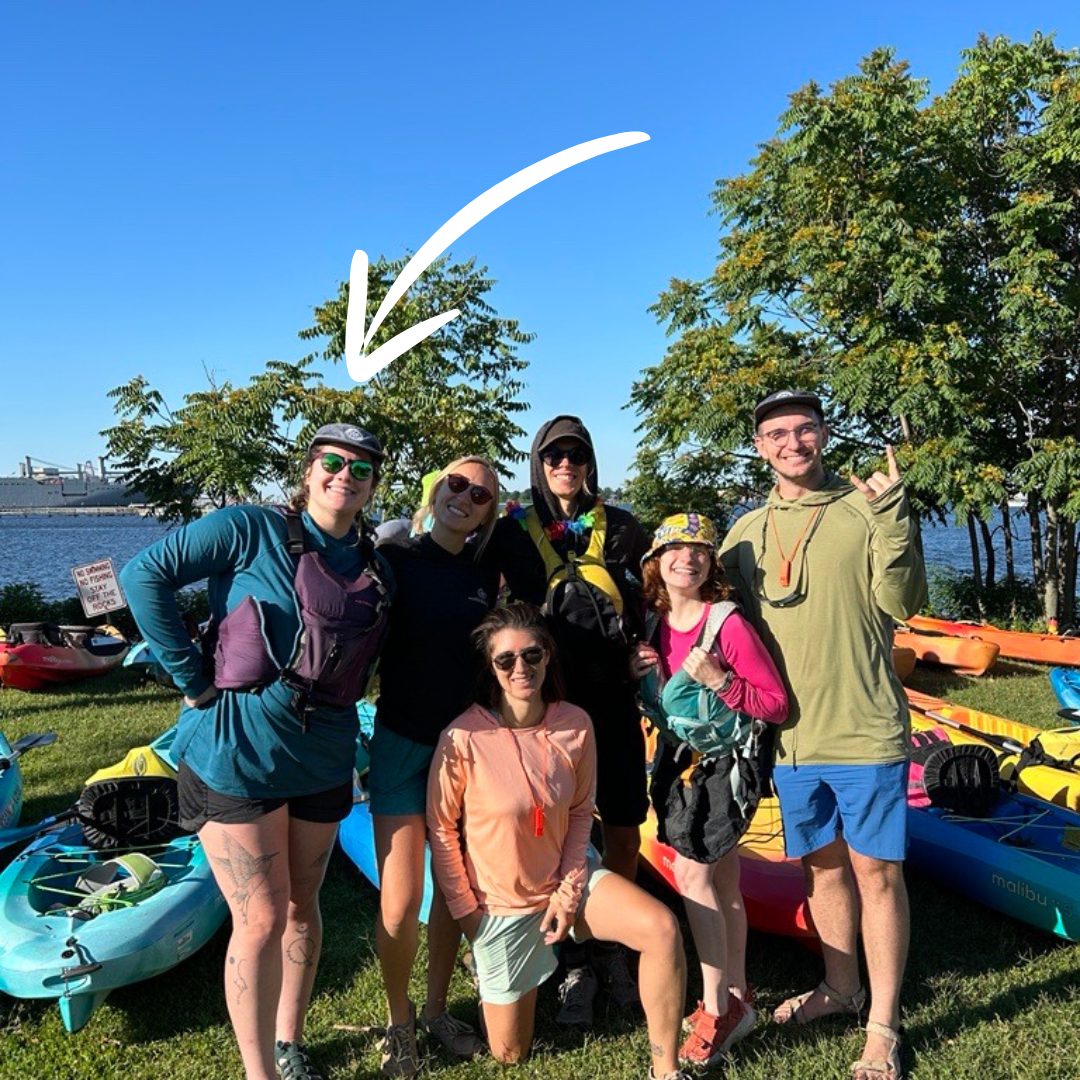
They Always Say That Water Is Life
Shelby Fredrickson
I’m thinking about fishing with my grandfather off a pier near Kent Island. We didn’t catch anything other than two crabs locked together in a smelly embrace. My grandfather untangled them from the line and showed me with the length of his weathered palm how they were too small to keep. He told me to make a wish, and we threw them back.
I’m thinking about the storm drain next to the house I grew up in right outside the city. When we were little, my neighbor once went down into that narrow tunnel to follow a stray tabby cat he had seen run in there. We had a solemn duty to protect her from accidentally walking too far and ending up in the ocean.
I’m thinking about the baby heron that we paddled past on the shores of the Potomac river; standing on two spindly little legs as they balanced on the rocky bank and stretched uncertain wings. The mother heron glided across the river up ahead, carefully patrolling her nursery.
I’m thinking about my student from last summer who would take any chance he could to hop out of his boat to swim. He would dig around in the mud and come up to the surface, holding his fists high in the air and yelling to us about all of the clams he had just caught (they were freshwater mussels, but he wouldn’t hear about it). He hollered all day long about his bounty and refused to stay in his boat if he had the slightest opportunity to swim. I still have the purplish shell he gave me when we left the Bay.
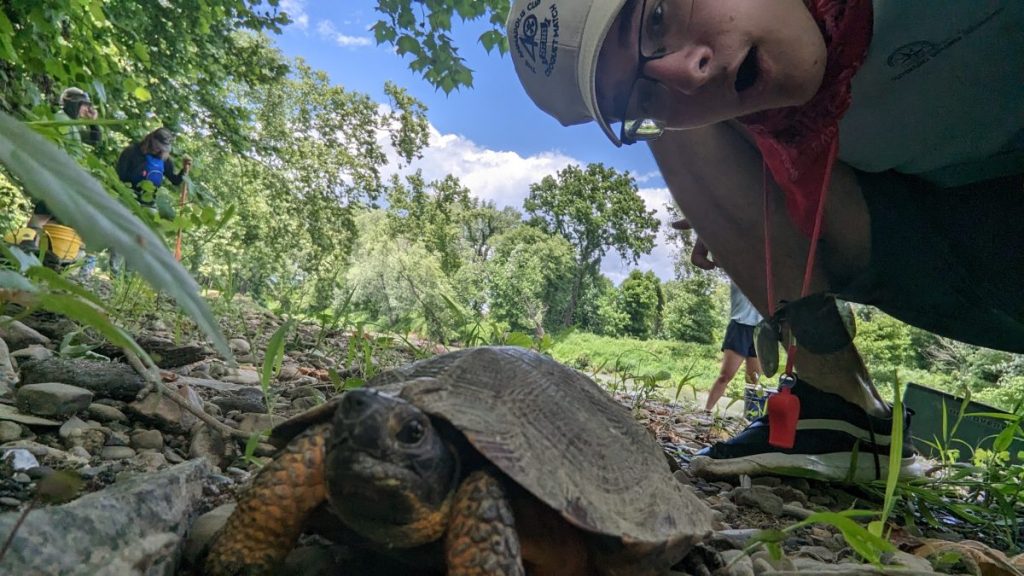
Something you learn early on as an educator is that you can’t ask people to care about something that they have no connection to. You can’t demand their attention or energy; you have to find a way to make them part of the story. Something you learn early on as an outdoor educator- you can’t make your students embrace sleeping next to spiders or be curious about the lush patches of moss without tearing them up or dip their fingers into the gentle river current without fear of what may be lurking underneath. You can’t command that they understand and respect a world that they have never felt like a part of.
“You can’t ask people to care about something that they have no connection to.”
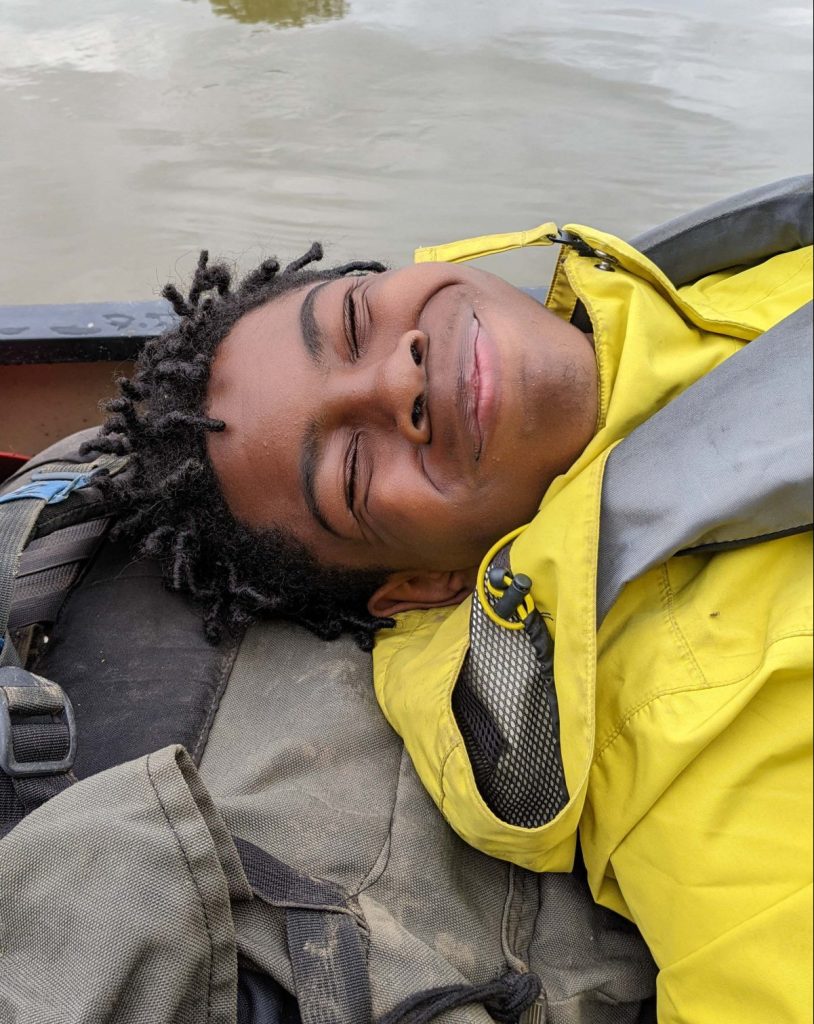
Whether it’s the Play Gap or the missing greenspace or any other facet of systemic environmental injustice, we are well aware that fewer and fewer of us are given the chance to grow up among leaves and muddy creeks. We are divided by who gets to feel safe outside; who gets to feel empowered by moving confidently in a strong current or up a climbing route.
I’m watching dozens of brightly colored boats pass by, the flashes of sunlight bouncing off so many paddle blades at once. Conversations spoken across choppy water and the hum of the active harbor are paused with intermediate cheers and laughter. I’m watching hundreds of people show up for their city, their waterways, and their local service organizations in a truly unique and wonderful way. This is the 7th annual Baltimore Floatilla, an initiative of the Waterfront Partnership to raise funds and awareness of the increasing health of the Inner Harbor, an outdoor space that just 10 years or so ago was largely deemed an irreparable sewage and garbage receptacle. This is one chapter in a long story of legislation, community organizing, and citizen science that is changing the data on the future of the Inner Harbor.

“I am one tiny blue boat in a sea of people ready to keep showing up for the idea that water is life.”
Every year our staff take our positions in sea kayaks along the 5 mile Floatilla route through the Harbor as safety paddlers. While our volunteer role is simple- we alert patrolling safety boaters to anyone that needs assistance; we get to see our community take part in work that we do daily. We wake up early in stunning heat, in wet Mid-Atlantic cold, and in pouring rain to show up to our classrooms across the Appalachian trail in Maryland and Pennsylvania; on the Potomac and Nanticoke rivers; in the forests of the Dolly Sods Wilderness and Savage River State Forest. Our role out there is anything but simple- we are working to teach our students new ways to take care of themselves, to take care of each other. We are working to teach our students about opportunities they don’t yet know exist and how to show up to those opportunities with steadiness and compassion. We are working to teach our students about their world, from the microscopic tardigrades that thrive in the damp moss carpets of forest floors to their capacity to build excellence and leadership into their lives back home.
I’m watching a celebration of the continuous work to write each of us into the story of our interconnectedness to the natural world. I am one tiny blue boat in a sea of people ready to keep showing up for the idea that water is life. It sounds dramatic, but maybe that’s because it really is that big and that important. That regardless of what circumstances we have arrived at, that we keep trying across the spectrum of our influence to impact change and conservation. That we all keep showing up in a thousand different ways to teach our youth that they are important, that they are needed, and that there is hope here. That every single one of them deserves both the safety and the joy of going to play outside, wherever that may be.
“I’m watching hundreds of people show up for their city, their waterways, and their local service organizations in a truly unique and wonderful way.”
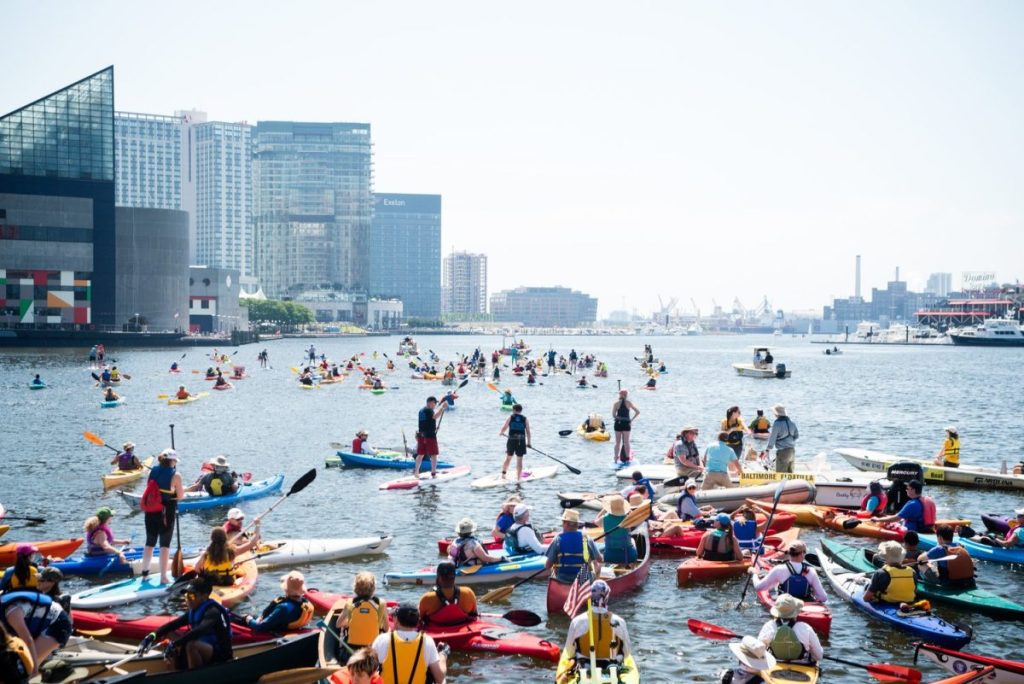
I’m thinking about laying on my back on a rock as the cold water of the Red Creek rushes around me somewhere in the southern part of the Dolly Sods. I’m thinking about yelling into the wind with anger at the strength of the waves pushing my kayak in the wrong direction as I’m trying to paddle somewhere near Parsons Island in Prospect Bay. I’m thinking about watching heavy rain drops break the surface tension of the glassy water somewhere on the Potomac; the splashes as the drops struck around us looked like a choreographed dance.
I’m thinking about the crabs and the storm drain and the baby heron and my students’ laughter and the salty sweat of summer in Maryland and the boundless gratitude for the Chesapeake Bay that gave it all to me.
